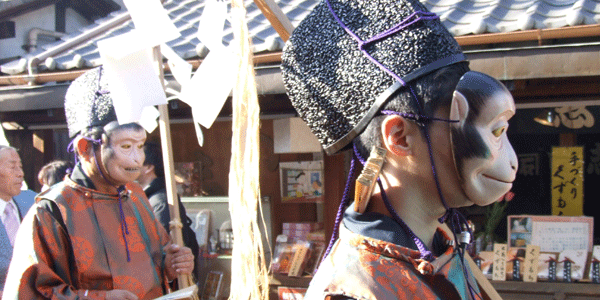Jan. "Gantan" (New Year's Day)
"Hatsumairi" (One's first visit to Shibamata Taishakuten, aka Daikyouji temple, in our case)
"Shihouhai" (Prayer to the Four Quarters) "Kitoukai" (Prayer Meeting)
Sabangbae Prayer service
"Hashigo-nori" (Ladder Climbing)
Ride the bridge(leg)
"Bunkazai Bouka Day" (Fire Protection Day for Cultural Assets)
Feb. "Setsubun" [3rd, Mar.] (the last day of winter in traditional Japanese calendar)
Mar. Apr. "Sakura Matsuri" (Cherry Blossoms Festival)
April Sakura Festival
"Taishakuten Shutsugen Kitou Daihouyou" (Grand Prayer Meeting for the Emergence of Taishakuten)
May. Jun. Jul. "Katsushika Nouryou Hanabi Taikai" [late August] (Katsushika fireworks display in the cool of a summer evening.) Aug. "Tora-san no Yube" (Tora-san's Evening)
"Uchimizu Daisakusen" (Water Sprinkling Operation)
"Mitama Matsuri" (The Spirit of the Dead Festival)
"Torasan Matsuri" (Tora-san Festival) Sep. "Taisho Roman Shibamata Yoi Matsuri" (Shibamata Evening Festival of Taisho Romanticism) Oct. "Shibamata Hachiman Jinja Omatsuri" (Shibamata Hachiman Shrine Festival)
Nov. "Ryujinsai" (Dragon God Festival)
"Oeshiki" (Memorial Service) Dec. "Susu-barai" (House cleaning)
"Oomisoka" (New Year's Eve)
|
Tora-san's Day (10th of every month)
2012年"Koushin" (57th of the sexagenary cycle)
It is said that the once lost principal object of the Daikyouji temple was found on the day of Koshin in Spring, 1779 (the 8th year of Ansei period). The day of Koshin comes every 60 days, and that day was designated as an "en-nichi," or a festival day.
On en-nichi, the Koshin Day, shops on the temple street are opened at around 9:00am, and visitng merchants open up street booths to sell "daruma" (stumbling doll) among other things. The temple street gets crowded with local people as well as sightseeing visitors. At the Daikyouji temple, an incense-stick-laying place is set up under the Nitenmon gate, where people lay incense stick and pray.
At the Taishakuten temple street, en-nichi is held on every Koshin day.
|



